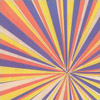 So I'm in a local favorite bistro having dinner with my parents,wearing my Mogwai T-shirt, and I'm on my way to the bathroom when theguitarist for the in-house jazz combo comes up to me. "Mogwai!" hesays. "My son's in a band, and they get compared to Mogwai a lot. Youshould check them out!" Who are they? "Yume Bitsu," he says, "on KRecords." I leave after dinner, never bothering to check out the band.A few days later, what should arrive in my mailbox as a new CD toreview? Yume Bitsu on K Records. A thought suddenly occurs to me: "Am Isomehow linked to this band karmically? Am I supposed to review thisband to complete some bizarre circle of events that will bring greatfame and fortune to some small family in eastern Milwaukee? Have I lostmy mind?" I chose the latter, but decided to review the record anyway.Yume Bitsu are sound collage artists. They get compared to Mogwai a lotprobably because they create epic instrumentals with rock instruments.It is NOT a fair comparison. To start with, Yume Bitsu, on this releaseparticularly, create their music vastly through recorded improvisation,where Mogwai are very structured, right down to each loud-soft-loudmoment. Secondly, Mogwai are Scottish. Yume Bitsu? Not Scottish. Andlastly, Yume Bitsu, on this release, chose not to name the tracks.Mogwai takes great pride in naming their tracks, I assure you. Allkidding aside, this record is really impressive. It's halfway betweenall out drone rock, and laborious post-rock. This release isparticularly disparate, though the band has always been difficult toassign to a specific genre. Each track, though, seems to take on a mindof its own, with the players merely translators for the higher power.Fitting, it seems, as the band claims the music comes from a channel ofenergy that is greater than the sum of the musicians. Guitars,keyboards, and drums blend and mate beautifully, creating music that isnot unlike Landing and Windy and Carl (name-watchers: if you like thosebands BUY THIS RECORD). I found myself constantly blocking the samethought in my head: "IT NEEDS STRUCTURE! IT NEEDS MORE STRUCTURE!" No,it doesn't. This music is just fine as it is, despite the fact that oneof its members' father tried to push it on me in a local bistro.
So I'm in a local favorite bistro having dinner with my parents,wearing my Mogwai T-shirt, and I'm on my way to the bathroom when theguitarist for the in-house jazz combo comes up to me. "Mogwai!" hesays. "My son's in a band, and they get compared to Mogwai a lot. Youshould check them out!" Who are they? "Yume Bitsu," he says, "on KRecords." I leave after dinner, never bothering to check out the band.A few days later, what should arrive in my mailbox as a new CD toreview? Yume Bitsu on K Records. A thought suddenly occurs to me: "Am Isomehow linked to this band karmically? Am I supposed to review thisband to complete some bizarre circle of events that will bring greatfame and fortune to some small family in eastern Milwaukee? Have I lostmy mind?" I chose the latter, but decided to review the record anyway.Yume Bitsu are sound collage artists. They get compared to Mogwai a lotprobably because they create epic instrumentals with rock instruments.It is NOT a fair comparison. To start with, Yume Bitsu, on this releaseparticularly, create their music vastly through recorded improvisation,where Mogwai are very structured, right down to each loud-soft-loudmoment. Secondly, Mogwai are Scottish. Yume Bitsu? Not Scottish. Andlastly, Yume Bitsu, on this release, chose not to name the tracks.Mogwai takes great pride in naming their tracks, I assure you. Allkidding aside, this record is really impressive. It's halfway betweenall out drone rock, and laborious post-rock. This release isparticularly disparate, though the band has always been difficult toassign to a specific genre. Each track, though, seems to take on a mindof its own, with the players merely translators for the higher power.Fitting, it seems, as the band claims the music comes from a channel ofenergy that is greater than the sum of the musicians. Guitars,keyboards, and drums blend and mate beautifully, creating music that isnot unlike Landing and Windy and Carl (name-watchers: if you like thosebands BUY THIS RECORD). I found myself constantly blocking the samethought in my head: "IT NEEDS STRUCTURE! IT NEEDS MORE STRUCTURE!" No,it doesn't. This music is just fine as it is, despite the fact that oneof its members' father tried to push it on me in a local bistro.
samples:


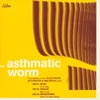 Pulling off a themed compilation with a number of better-known musicalartists is not the easiest thing to do, so I commend this new label,Mobile, for piecing together something this consistent. The themebasically rides a current trend in electronic music, incorporating theusage of accordion (historically referred to as an asthmatic worm) andthe simpler, yet similar sounding melodica. Unfortunately, of thetwelve tracks, only two (Dntel and Markus Nikolai) are exclusive tothis compilation. While I clearly love Múm, I'm wondering who would beshopping for this compilation who hasn't heard this album track from'Yesterday Was Dramatic', but in all fairness, it is quitecomplimentary to the rest of the compilation, which includes commonunderground electro-celebs Atom TM, Matthew Herbert's Doctor Rockit,Ekkehard Ehlers (as Maerz with Albrecht Kunze), Burnt Friedman &Jakt Liebezeit and Gonzales. Unexpected treats include the pleasanthead-nod from Sensorama, a gipsy folk-esque song from a band simplytitled Hey, and a French film score-mimicing contribution from GotanProject. Jimmy Tamborello of Dntel sounds like he recruited that singerfrom Casiotone for the Painfully Alone for a gorgeous track whichperfectly compliments last year's stunning Dntel album on Plug Researchand Wechsel Garland incorporate the star instrument into a laid-backorgan, vibe, bass and drum jam, making me wish I knew more about thisartist. It might not be the most original compilation you'll find butit sure does sound good.
Pulling off a themed compilation with a number of better-known musicalartists is not the easiest thing to do, so I commend this new label,Mobile, for piecing together something this consistent. The themebasically rides a current trend in electronic music, incorporating theusage of accordion (historically referred to as an asthmatic worm) andthe simpler, yet similar sounding melodica. Unfortunately, of thetwelve tracks, only two (Dntel and Markus Nikolai) are exclusive tothis compilation. While I clearly love Múm, I'm wondering who would beshopping for this compilation who hasn't heard this album track from'Yesterday Was Dramatic', but in all fairness, it is quitecomplimentary to the rest of the compilation, which includes commonunderground electro-celebs Atom TM, Matthew Herbert's Doctor Rockit,Ekkehard Ehlers (as Maerz with Albrecht Kunze), Burnt Friedman &Jakt Liebezeit and Gonzales. Unexpected treats include the pleasanthead-nod from Sensorama, a gipsy folk-esque song from a band simplytitled Hey, and a French film score-mimicing contribution from GotanProject. Jimmy Tamborello of Dntel sounds like he recruited that singerfrom Casiotone for the Painfully Alone for a gorgeous track whichperfectly compliments last year's stunning Dntel album on Plug Researchand Wechsel Garland incorporate the star instrument into a laid-backorgan, vibe, bass and drum jam, making me wish I knew more about thisartist. It might not be the most original compilation you'll find butit sure does sound good. Marking the much-anticpated return of Main, this album is much more along the lines of a microsound record than that of Robert Hampson's former Beggars' Banquet days doing guitar-based soundscapes. 'Tau' is very stripped down and clean, and features a dryness and lightness that heretofore has not been prevalent in Main releases.
Marking the much-anticpated return of Main, this album is much more along the lines of a microsound record than that of Robert Hampson's former Beggars' Banquet days doing guitar-based soundscapes. 'Tau' is very stripped down and clean, and features a dryness and lightness that heretofore has not been prevalent in Main releases.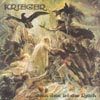 So I went and bought the new Krieger CD-R since it's presented byRasthof Dachau, and I was a fan of their first rythmic powerelectronics LP entitled "Blut Und Boden." And holy shit, did i waste mymoney. There is absolutely nothing worthwhile to this release, as it'sjust a bunch of shitty orchestral samples over some equally shitty darkambient soundtrack with some German vocals, and at some point what ismost likely the rambling of some white supremicist talking over it. Andno, I can't describe the disc any further, because that's what thewhole damn thing sounds like. But no matter how bad I tell you it is,some of you are still going to buy it. "Why?" you ask? Because RasthofDachau are like cool and they like put out some split video withGenocide Organ. Since I can't even find out who the hell the artist is,I'm convinced this is really Genocide Organ under a pseudonym. We allknow those 30 year old, misogynist, virgin, it-loving, noise recordcollectors still living in their mom's basement need to own this andsimply can't live without it, so they'll pay ridiculous prices on ebay.Mr. Dachau is laughing all the way to the bank with this fine waste ofplastic. The only decent thing I can say about this is that at least itdoesn't have any artwork with dead bodies, raped women, orholocaust-related motifs that are prevalent in this oh-so-wonderfulpower noise genre. In an ideal world, I'd be able to tell whether ornot a CD is good just by its cover art, and in this case, the covershould have had some shit-fetishist defecating into his mother's mouthso I could get a taste of what this CD is all about.
So I went and bought the new Krieger CD-R since it's presented byRasthof Dachau, and I was a fan of their first rythmic powerelectronics LP entitled "Blut Und Boden." And holy shit, did i waste mymoney. There is absolutely nothing worthwhile to this release, as it'sjust a bunch of shitty orchestral samples over some equally shitty darkambient soundtrack with some German vocals, and at some point what ismost likely the rambling of some white supremicist talking over it. Andno, I can't describe the disc any further, because that's what thewhole damn thing sounds like. But no matter how bad I tell you it is,some of you are still going to buy it. "Why?" you ask? Because RasthofDachau are like cool and they like put out some split video withGenocide Organ. Since I can't even find out who the hell the artist is,I'm convinced this is really Genocide Organ under a pseudonym. We allknow those 30 year old, misogynist, virgin, it-loving, noise recordcollectors still living in their mom's basement need to own this andsimply can't live without it, so they'll pay ridiculous prices on ebay.Mr. Dachau is laughing all the way to the bank with this fine waste ofplastic. The only decent thing I can say about this is that at least itdoesn't have any artwork with dead bodies, raped women, orholocaust-related motifs that are prevalent in this oh-so-wonderfulpower noise genre. In an ideal world, I'd be able to tell whether ornot a CD is good just by its cover art, and in this case, the covershould have had some shit-fetishist defecating into his mother's mouthso I could get a taste of what this CD is all about.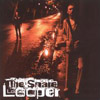 Whether you think you have or not, you've heard Looper. The sideproject turned main project of Stuart David, departed bass player oftwee rock outfit Belle and Sebastian, Looper have had music featured incommercials and films - 'Mondo '77' from their 2000 offering "TheGeometrid" was a featured track in Cameron Crowe's disastrous "VanillaSky". The band is essentially David, his wife Karn, and his littlebrother Ronnie Black. On this album, however, Looper's first for MuteRecords, it would seem that David has a few other collaborators whohave changed the landscape for Looper forever. The album was inspiredby David's second novel, "The Peacock Manifesto", and - as a partialsettlement of authorship disputes over the novel between David and hismain character Peacock Johnson - the album "features" Peacock andsaxophonist Evil Bob. Whether or not these two exist as more than apublicity vehicle for the new record remains to be seen. However, their"presence" has altered Looper into a noir film soundtrack band with andR&B heart. So, now, whether you've heard Looper or not, you'venever heard Looper like this. "The Snare" is an homage to darkerunderbellies - a dance version of Glen Campbell's "Rhinestone Cowboy",the aim of Peacock Johnson, it isn't. It's far removed from Looper'spoppier fare from first track to the last. It's Looper's seemingtribute to modern music by way of earlier influences. That's right:it's like Looper making an album with Missy Eliott. With the Davidssinging. I know, the description sounds bad. And the record isn't thebest thing Looper have done. In fact, it just smacks of "We know we'vebeen pretty disposable up until now, so here's a more mature album forya!" The whole album has the same drum sound, the same vocals, the samebass sound. It's meant to be a concept album where all tracks tietogether, but they only contain the same elements. There appears to beno growth from previous releases. In fact, the only track that holdsany promise is the final one, 'Fucking Around', and that's because itsounds vaguely like David's time with Belle and Sebastian. I'd give itthe whole record a pass, really, but try it out because it might beyour bag, man.
Whether you think you have or not, you've heard Looper. The sideproject turned main project of Stuart David, departed bass player oftwee rock outfit Belle and Sebastian, Looper have had music featured incommercials and films - 'Mondo '77' from their 2000 offering "TheGeometrid" was a featured track in Cameron Crowe's disastrous "VanillaSky". The band is essentially David, his wife Karn, and his littlebrother Ronnie Black. On this album, however, Looper's first for MuteRecords, it would seem that David has a few other collaborators whohave changed the landscape for Looper forever. The album was inspiredby David's second novel, "The Peacock Manifesto", and - as a partialsettlement of authorship disputes over the novel between David and hismain character Peacock Johnson - the album "features" Peacock andsaxophonist Evil Bob. Whether or not these two exist as more than apublicity vehicle for the new record remains to be seen. However, their"presence" has altered Looper into a noir film soundtrack band with andR&B heart. So, now, whether you've heard Looper or not, you'venever heard Looper like this. "The Snare" is an homage to darkerunderbellies - a dance version of Glen Campbell's "Rhinestone Cowboy",the aim of Peacock Johnson, it isn't. It's far removed from Looper'spoppier fare from first track to the last. It's Looper's seemingtribute to modern music by way of earlier influences. That's right:it's like Looper making an album with Missy Eliott. With the Davidssinging. I know, the description sounds bad. And the record isn't thebest thing Looper have done. In fact, it just smacks of "We know we'vebeen pretty disposable up until now, so here's a more mature album forya!" The whole album has the same drum sound, the same vocals, the samebass sound. It's meant to be a concept album where all tracks tietogether, but they only contain the same elements. There appears to beno growth from previous releases. In fact, the only track that holdsany promise is the final one, 'Fucking Around', and that's because itsounds vaguely like David's time with Belle and Sebastian. I'd give itthe whole record a pass, really, but try it out because it might beyour bag, man. This collection of three sessions shows a group evolving from a whisper to (less a scream, than) the ghost of a mumble. Movietone’s introspective sound is naturally overlooked in a society which places more value on action, fast talking, and loudness. Their music remains elusive to define and to grasp, with a vocal style, choice of instruments, and an arm’s length embrace of folk and improvisational jazz which sets them apart, even from such contemporaries as Third Eye Foundation and Flying Saucer Attack in the post-rock branch of (what can loosely be termed) the Bristol post-rock "scene." The best of their work might be described by the verse (Peter 3:4) "let your adorning be the hidden person of the heart with the imperishable beauty of a quiet spirit."
This collection of three sessions shows a group evolving from a whisper to (less a scream, than) the ghost of a mumble. Movietone’s introspective sound is naturally overlooked in a society which places more value on action, fast talking, and loudness. Their music remains elusive to define and to grasp, with a vocal style, choice of instruments, and an arm’s length embrace of folk and improvisational jazz which sets them apart, even from such contemporaries as Third Eye Foundation and Flying Saucer Attack in the post-rock branch of (what can loosely be termed) the Bristol post-rock "scene." The best of their work might be described by the verse (Peter 3:4) "let your adorning be the hidden person of the heart with the imperishable beauty of a quiet spirit."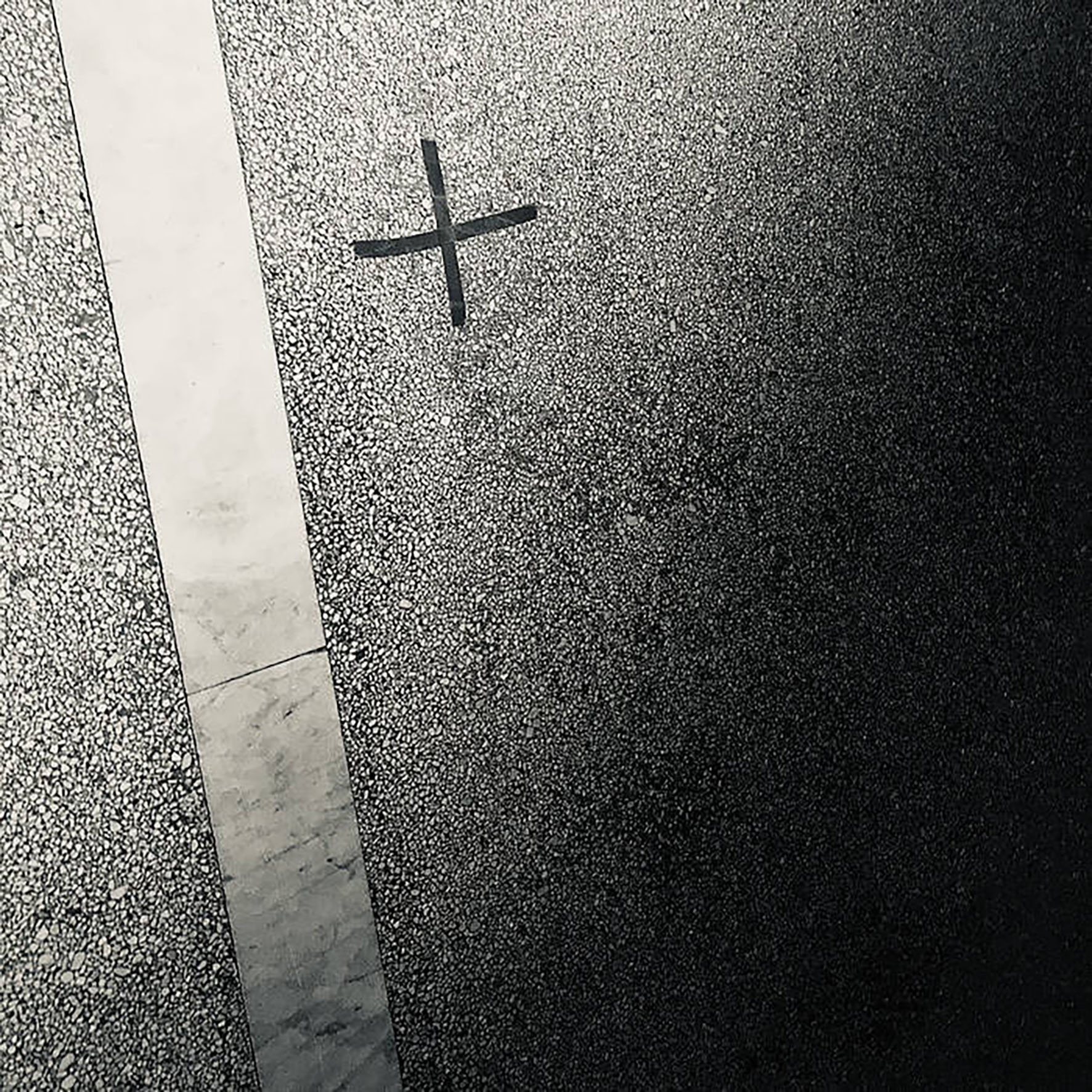
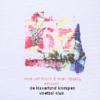 The Legendary Pink Dots' horn player Niels Van Hoorn and Mark Spybey ofDead Voices On Air have been collaborating for a few years now. Neilshas contributed to DVOA live sets, the 'Frankie Pett' album and theSpybey / Mick Harris disc 'Bad Roads, Young Drivers' disc. But thisproject, created while Spybey was a resident of the Van Hoorn householdin The Netherlands, puts the focus almost entirely upon Niels - hishorn playing as well as the various sounds to be found and made amongstthe pastoral riverside setting he calls home. All of this is, ofcourse, thoroughly digitally processed by Spybey, so much so that halfof the 54 minutes passes before a sound typical of a horn is heard. Butthe atypical is just as welcome here as the possibilities of the hornplaying are explored. After a few listens, I've become as fascinated asSpybey is with the sounds he has gathered and shaped. In the extensiveliner notes he explains the process involved for each track, howexactly he recorded Niels or what exactly we're hearing, such as micescurrying about the barn, a power generator, Niels welding, riverboats, distorted raindrops, an old jazz record, etc. Most of the trackssimply, slowly, quietly flow - presumably like the nearby river Waal -the music being something pleasantly in-between melodic and abstract."South Side Style", "Empress of the Blues" and "Stockyard Strut" arelittle more than beautifully melancholy flute, tenor and baritone saxphrases, respectively. A couple of tracks are a bit more mischievous."Jelly Lord" is a backwards, overdriven horn anthem for the Land ofClover, darkly underpinned by nearing thunderstorms. And "Scrapper Boy"erupts into a buzzing machine drone akin to Mika Vainio's solo work.Spybey and Van Hoorn have created not only a souvenir of a time andplace of their friendship, but a really lovely soundtrack for others toshare in. 'Klaverland' might just end up on my best of 2002 list.
The Legendary Pink Dots' horn player Niels Van Hoorn and Mark Spybey ofDead Voices On Air have been collaborating for a few years now. Neilshas contributed to DVOA live sets, the 'Frankie Pett' album and theSpybey / Mick Harris disc 'Bad Roads, Young Drivers' disc. But thisproject, created while Spybey was a resident of the Van Hoorn householdin The Netherlands, puts the focus almost entirely upon Niels - hishorn playing as well as the various sounds to be found and made amongstthe pastoral riverside setting he calls home. All of this is, ofcourse, thoroughly digitally processed by Spybey, so much so that halfof the 54 minutes passes before a sound typical of a horn is heard. Butthe atypical is just as welcome here as the possibilities of the hornplaying are explored. After a few listens, I've become as fascinated asSpybey is with the sounds he has gathered and shaped. In the extensiveliner notes he explains the process involved for each track, howexactly he recorded Niels or what exactly we're hearing, such as micescurrying about the barn, a power generator, Niels welding, riverboats, distorted raindrops, an old jazz record, etc. Most of the trackssimply, slowly, quietly flow - presumably like the nearby river Waal -the music being something pleasantly in-between melodic and abstract."South Side Style", "Empress of the Blues" and "Stockyard Strut" arelittle more than beautifully melancholy flute, tenor and baritone saxphrases, respectively. A couple of tracks are a bit more mischievous."Jelly Lord" is a backwards, overdriven horn anthem for the Land ofClover, darkly underpinned by nearing thunderstorms. And "Scrapper Boy"erupts into a buzzing machine drone akin to Mika Vainio's solo work.Spybey and Van Hoorn have created not only a souvenir of a time andplace of their friendship, but a really lovely soundtrack for others toshare in. 'Klaverland' might just end up on my best of 2002 list.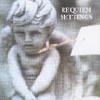 The Silverman is keyboardist Phil Knight, a founding and current memberof The Legendary Pink Dots. This is his third solo album following upon 1995's 'Dream Cell' for Terminal Kaleidoscope and 1998's'Silvermandalas', also for Soleilmoon. Like the latter, this disc issimply comprised of numbered parts, in this case six interconnectedtracks ranging from two to nearly 13 minutes in length. The title isperfect as the album was motivated by the death of his father and theplaces Knight lived and visited while working upon it. Each setting isunique and incorporates found as well as synthesized sounds. Part onefeatures ghostly metallic bell tones amidst a dense, shifting fog. Twomoves into a more electronic territory as a sequence of synth notes,waves and background bass bumps plays out. Three glistens as a dulcimerand subdued electronics dance with an elegant array of winter soundssuch as crumpled snow, cracked ice and water. It's really something howit gracefully slips in and out of consciousness. Four and five arebrief interludes of mechanical whirrings, swooping tones, more bells,rain (or maybe fire) and birdsong. And six is the requiem itself.Steady synth voices become masked by wind and the sounds of trains,evoking cross country movement as well as sorrow. Much like DavidTibet's homage to his departed father, Current 93's 'Sleep Has HisHouse', The Silverman has respectfully paid tribute to his own fatherwith a very lovely album, his best yet.
The Silverman is keyboardist Phil Knight, a founding and current memberof The Legendary Pink Dots. This is his third solo album following upon 1995's 'Dream Cell' for Terminal Kaleidoscope and 1998's'Silvermandalas', also for Soleilmoon. Like the latter, this disc issimply comprised of numbered parts, in this case six interconnectedtracks ranging from two to nearly 13 minutes in length. The title isperfect as the album was motivated by the death of his father and theplaces Knight lived and visited while working upon it. Each setting isunique and incorporates found as well as synthesized sounds. Part onefeatures ghostly metallic bell tones amidst a dense, shifting fog. Twomoves into a more electronic territory as a sequence of synth notes,waves and background bass bumps plays out. Three glistens as a dulcimerand subdued electronics dance with an elegant array of winter soundssuch as crumpled snow, cracked ice and water. It's really something howit gracefully slips in and out of consciousness. Four and five arebrief interludes of mechanical whirrings, swooping tones, more bells,rain (or maybe fire) and birdsong. And six is the requiem itself.Steady synth voices become masked by wind and the sounds of trains,evoking cross country movement as well as sorrow. Much like DavidTibet's homage to his departed father, Current 93's 'Sleep Has HisHouse', The Silverman has respectfully paid tribute to his own fatherwith a very lovely album, his best yet. Philip Jeck always seems to surprise and surpass expectation every timeI hear him perform. I've heard him spin out haunting loops for avantgarde dancers to strut about to in art spaces. I've heard him spinstickered platters alongside guitarist Vergil Sharkya and fractalvideographer Gerd Willschvetz in an underground car park in Liverpool.I've heard his scaffolded ranks of old car boot turntables mash upcrackly memory traces from worn needles bumping into wires and stickersin a London gallery. I've heard him go walkabout at a festival opening,cutting up dictaphone recordings with the pause button. After hisambitious quartet of lengthily (r)evolving 'Vinyl Codas' released bythe Intermedium label, he returns to Touch with seven shorter liveexcerpts from performances in Liverpool, Manchester, Osaka, Tokyo andVienna. With only a single sample Casio keyboard to aid the junkyardturntables spinning varispeed deteriorating vinyl, he necessarilylimits his options but unlocks endless potentials from abundantalternate histories coded in the grooves. When he loops records at lowspeed, worn old cliches morph into haunting new textures. A phantasmalkeyboard hoot that forms the bedrock of "Pax" sounds like it might'vemorphed slowly from a cheesy old J. Geils Band charity shop hit."Above" cuts scratchy old vinyl into train chug clunks and chickensquawk with some slowed speech narration to explain what exactly isn'tgoing on. "Lambing" is a home recording, soundtracking a film by LucyBaldwyn, and wouldn't sound out of place on his previous Touch CD'Surf,' with groaning ghost vox repeating an eerie refrain over thecrackle'n'drone spin, until slowly a sunrise glow cracks dawn beneaththe locked groove rhythm faultlines. "Vienna Faults" waltz around likea music box in a tumble dryer. There's some crazily mangled sitar"Below," reversing into hollow metal hammering, cut dead by a suddendescending blues guitar riff. "Open" seems to rework familiar noisesfrom 'Surf' into a noisier delayed clatter. "Close" does just that,with some more sitar loops, more meditative but just as playful asbefore. Stray starry plucked fragments drop in at odd angles until aloop locks and deteriorates to a stutter as a single piano note bashesto infinity. A ghost choir of Hamaiian folk singers emerges from thevinyl crackle fog to bid a fond farewell. If you haven't heard PhilipJeck before, this is not his most immediate recording and 'Surf' or the'Vinyl Coda' series might be better ports of entry. He has not yet leftthe building.
Philip Jeck always seems to surprise and surpass expectation every timeI hear him perform. I've heard him spin out haunting loops for avantgarde dancers to strut about to in art spaces. I've heard him spinstickered platters alongside guitarist Vergil Sharkya and fractalvideographer Gerd Willschvetz in an underground car park in Liverpool.I've heard his scaffolded ranks of old car boot turntables mash upcrackly memory traces from worn needles bumping into wires and stickersin a London gallery. I've heard him go walkabout at a festival opening,cutting up dictaphone recordings with the pause button. After hisambitious quartet of lengthily (r)evolving 'Vinyl Codas' released bythe Intermedium label, he returns to Touch with seven shorter liveexcerpts from performances in Liverpool, Manchester, Osaka, Tokyo andVienna. With only a single sample Casio keyboard to aid the junkyardturntables spinning varispeed deteriorating vinyl, he necessarilylimits his options but unlocks endless potentials from abundantalternate histories coded in the grooves. When he loops records at lowspeed, worn old cliches morph into haunting new textures. A phantasmalkeyboard hoot that forms the bedrock of "Pax" sounds like it might'vemorphed slowly from a cheesy old J. Geils Band charity shop hit."Above" cuts scratchy old vinyl into train chug clunks and chickensquawk with some slowed speech narration to explain what exactly isn'tgoing on. "Lambing" is a home recording, soundtracking a film by LucyBaldwyn, and wouldn't sound out of place on his previous Touch CD'Surf,' with groaning ghost vox repeating an eerie refrain over thecrackle'n'drone spin, until slowly a sunrise glow cracks dawn beneaththe locked groove rhythm faultlines. "Vienna Faults" waltz around likea music box in a tumble dryer. There's some crazily mangled sitar"Below," reversing into hollow metal hammering, cut dead by a suddendescending blues guitar riff. "Open" seems to rework familiar noisesfrom 'Surf' into a noisier delayed clatter. "Close" does just that,with some more sitar loops, more meditative but just as playful asbefore. Stray starry plucked fragments drop in at odd angles until aloop locks and deteriorates to a stutter as a single piano note bashesto infinity. A ghost choir of Hamaiian folk singers emerges from thevinyl crackle fog to bid a fond farewell. If you haven't heard PhilipJeck before, this is not his most immediate recording and 'Surf' or the'Vinyl Coda' series might be better ports of entry. He has not yet leftthe building.
